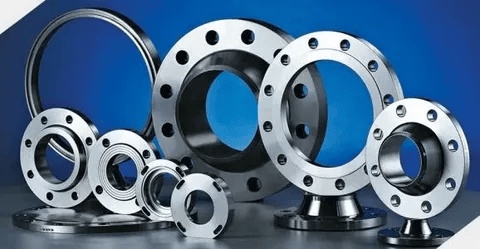Flanges play a pivotal role in connecting pipes, valves, pumps, and other equipment, forming an integral part of industrial systems — be it in petrochemical plants, water management systems, or manufacturing facilities. Understanding the various aspects of flange weights and dimensions is crucial for industrial buyers, maintenance professionals, and engineers. This guide serves as an authoritative source, detailing important considerations and providing a handy flange weight and dimensions chart for reference.
Knowing Your Flanges
What is a Flange?
A flange is a method of connecting pipes, valves, pumps, and other equipment to form a piping system. It also provides easy access for cleaning, inspection, or modification. Flanges are usually welded or threaded and paired with bolts and gaskets to create the seal.
Types of Flanges
- Weld Neck Flanges: Ideal for high-pressure applications.
- Slip-on Flanges: Easier to install and align, suitable for low-pressure operations.
- Blind Flanges: Used to seal the end of piping systems.
- Threaded Flanges: Attached without welding, perfect for small diameters.
- Lap Joint Flanges: Used with stub ends, facilitating easy bolt alignment.
Flange Dimensions
Dimensional accuracy is vital for ensuring compatibility and integrity in a flanged connection. Flanges should match regarding bore size, facing, thickness, diameter, and bolt circle. The industry standards like ANSI/ASME B16.5, B16.47, or the ISO standards set these dimensions, allowing versatility across global production and supply chains.
Factors Determining Flange Dimensions:
- Pressure Ratings: Varying pressure classes denote different thickness and bolt sizes.
- Temperature: High temperatures require more robust flanges to maintain their structural integrity.
- Material Specifications: Material grade can affect dimensional requirements due to their physical properties.
Flange Weight Chart
Here’s a simplified Flange Weight Chart for your quick reference. Please note that these are average values, and manufacturers’ charts may vary slightly. Selecting the Right Flange
Selecting the right flange involves understanding the system’s pressure rating, the necessary material quality for the fluid being transported, and the relevant environmental conditions such as temperature extremes or the presence of corrosive substances.
Conclusion
When purchasing industrial flanges, it is not enough just to know the size. Being familiar with flanges’ weights and dimensions, as described in standards like the ANSI B16.5, is crucial for ensuring the robustness of a system’s connections. Remember to regularly consult detailed manufacturer charts or standards documentation, as the weight and dimensions of a flange could affect overall system performance.
For further questions, assistance, or specific weight calculations, always seek out reputable flange suppliers or professional engineers who offer not just products but solutions tailored to your needs.


No comments yet